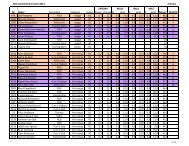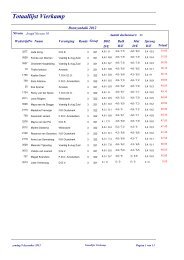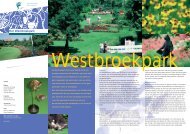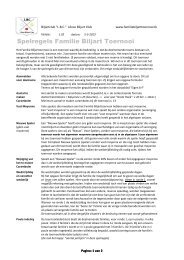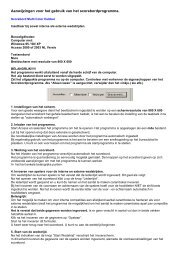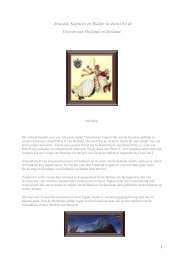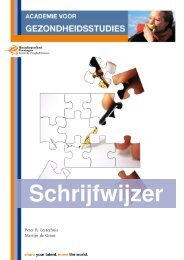Alusil, Lokasil, Silitec, DiASil, Mercosil, ALBOND—these ... - Online.nl
Alusil, Lokasil, Silitec, DiASil, Mercosil, ALBOND—these ... - Online.nl
Alusil, Lokasil, Silitec, DiASil, Mercosil, ALBOND—these ... - Online.nl
Create successful ePaper yourself
Turn your PDF publications into a flip-book with our unique Google optimized e-Paper software.
contact with the ultra-fine honing grit used in the exposure step. This is the result of the extreme<br />
surface area and high energy found in freshly cut, ultra-fine metal chips. These conditions facilitate<br />
far more aggressive chemical activity with the oil additives than would be experienced with larger<br />
metal chips.<br />
In most cases, the first two honing steps can be accomplished with conventional or diamond<br />
abrasives [Figure 4]. However, because of the high value of these engine blocks and the wide<br />
variety of OEM materials and manufacturing methods, it is critical for a rebuilder to know the exact<br />
recommendation for reconditioning abrasives or consult a honing abrasive supplier. Some cylinder<br />
materials may simply require metal-bonded diamond for all of the steps. Conventional abrasives<br />
with bronze guide shoes are unquestionably the most economical option for infrequent work with<br />
hypereutectic aluminum. In production or OEM work, diamond is preferable for the first two honing<br />
passes.<br />
The first honing step may not be required if the block has been bored with a final finish of less than<br />
or equal to 19-microinch Ra (0.5-micron). If necessary, as a first honing step we recommend<br />
removal of 0.001" (25 microns), using classic abrasives or a 29-micron diamond, to produce a finish<br />
less than or equal to 19-microinch Ra (0.5-micron). The second finish-honing step removes 0.0001"<br />
(2.5 microns), again using traditional abrasive or a 9-micron diamond to produce a finish less than or<br />
equal to 3.9-microinch Ra (0.1-micron).<br />
The final exposure step requires a new specially developed, elastomer-bond abrasive (XM27), using<br />
light honing force. For the exposure step, we recommend tooling with the greatest abrasive surface<br />
contact area. This step is based on time, typically 1 to 1 ½ minutes for 19-microinch (0.5-micron)<br />
exposure height. Longer cycle times are not harmful because the process is somewhat self-limiting.<br />
It is absolutely critical that honing force or pressure be kept as low as possible, while still<br />
maintaining tool stability. Surfaces shown in the accompanying illustrations were honed with less<br />
than 5 lbs/in 2 pressure.<br />
The elastomer based “stone” [Figure 5] is purpose-designed to overcome three limitations of rigid<br />
abrasive in the silicon exposure process. First, the elastomer serves as a cushion, deforming to allow<br />
individual abrasive particles to literally bounce over the silicon particles, while still being rigid<br />
enough to cut the surrounding aluminum. Second, the elastomer dampens or limits the overall force<br />
applied to the abrasive, making the process very forgiving of variations in pressure from the honing<br />
machine feed system. The honing tool diametrical expansion does not have to exactly match the<br />
rate at which the cylinder is increasing in diameter from stock removal. Third, the elastomer<br />
conforms to any taper or out-of-roundness in the cylinder, allowing it to remove very small<br />
(0.00002"/0.5 micron per side) amounts of material uniformly throughout the cylinder. With rigid<br />
abrasive, any out-of-roundness in the bore would result in abrasive cutting pressure variations as<br />
the honing tool rotated.<br />
Critical Point – Process Verification<br />
Any shop planning to do work on hypereutectic cylinders must have a Profilometer or similar<br />
instrument for contact surface texture measurement to verify results. The instrument should<br />
produce a trace, not just a readout, and must be capable of Rk, Rpk and Rvk measurements. These<br />
engine blocks can cost $4,000 or more, so honing without a Profilometer to verify results would be<br />
negligent.



